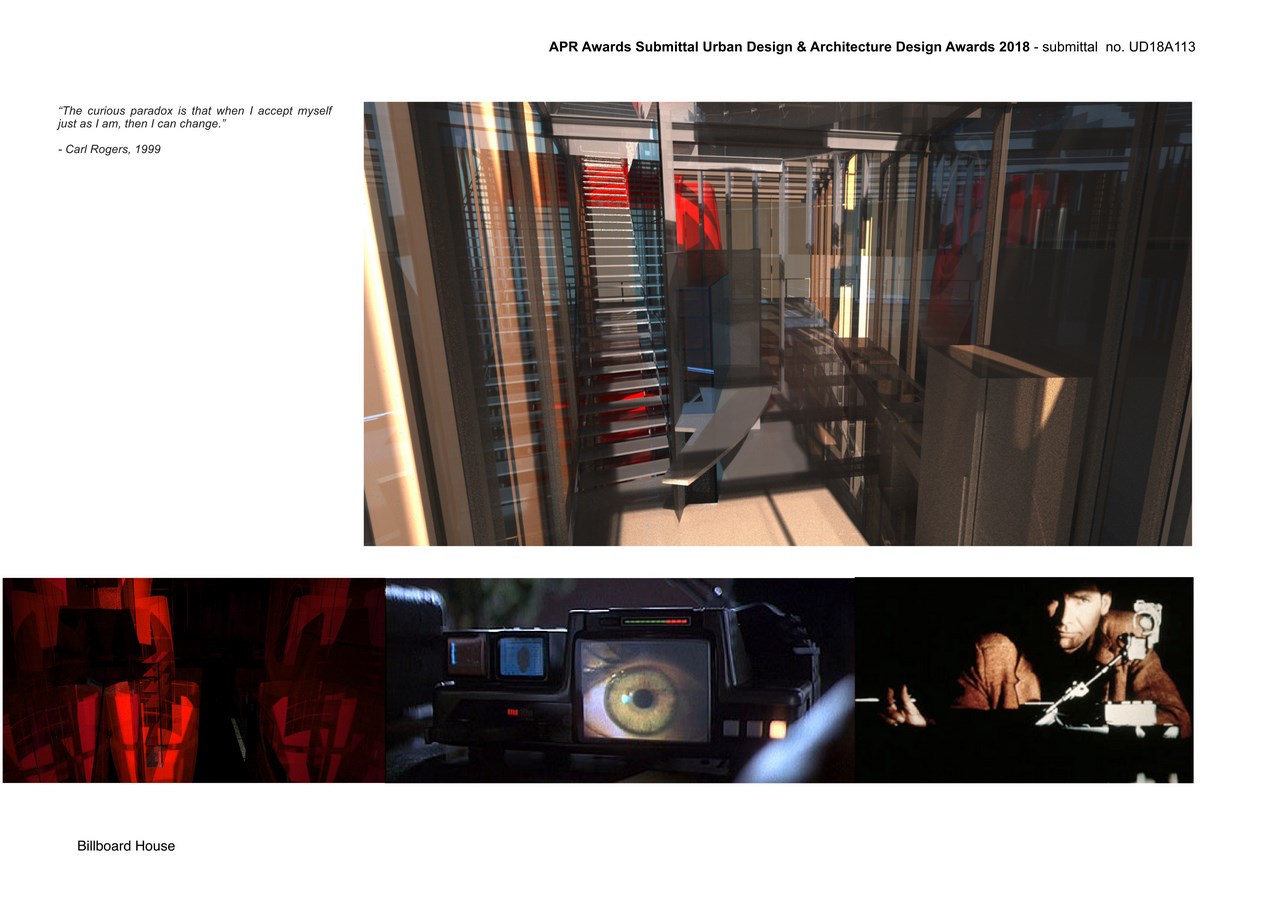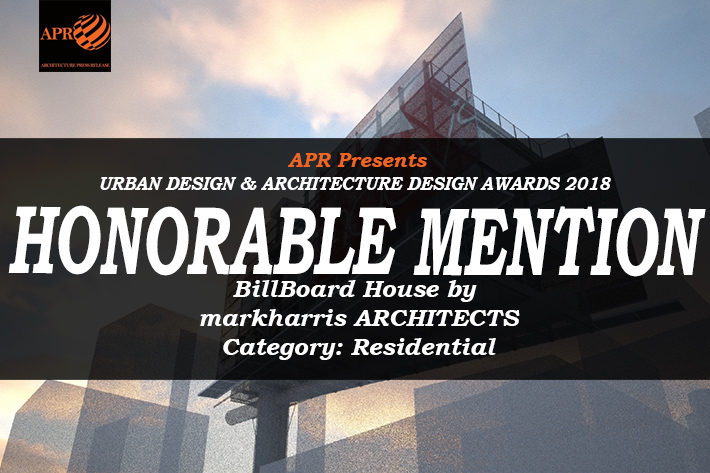Design Abstract: The idea of habitable space within the confines of an advertisement billboard brings to mind several notions about the rituals of habitation and the narratives between architecture, context, use, and alternative atmospheres. The billboard installs within an existing urban context, yet is seen as a secluded and solitary figure in it’s occupation of ‘found’ or ‘discarded’ spaces typically unconsidered. By its own nature, the billboard is less a ‘normal’ setting for living, and therefore gives itself much more readily to the contemplative setting of de-familiarization. Although the billboard does not de-familiarize the spaces and events that take place within, it does, nevertheless, de-familiarize our normal behavior and call to attention our own need to abstract what might otherwise be ‘normal’ activities.
Urban Design & Architecture Design Awards 2018
Honorable Mention | Category: Residential
Architects: Mark Harris
Studio: markharris ARCHITECTS
Team Members: Mark Harris, Sam Friesema, Richard Mapes, Brian Elyo, Takashi Ichinose
Country: United States
Website: www.mharrisarchitects.com
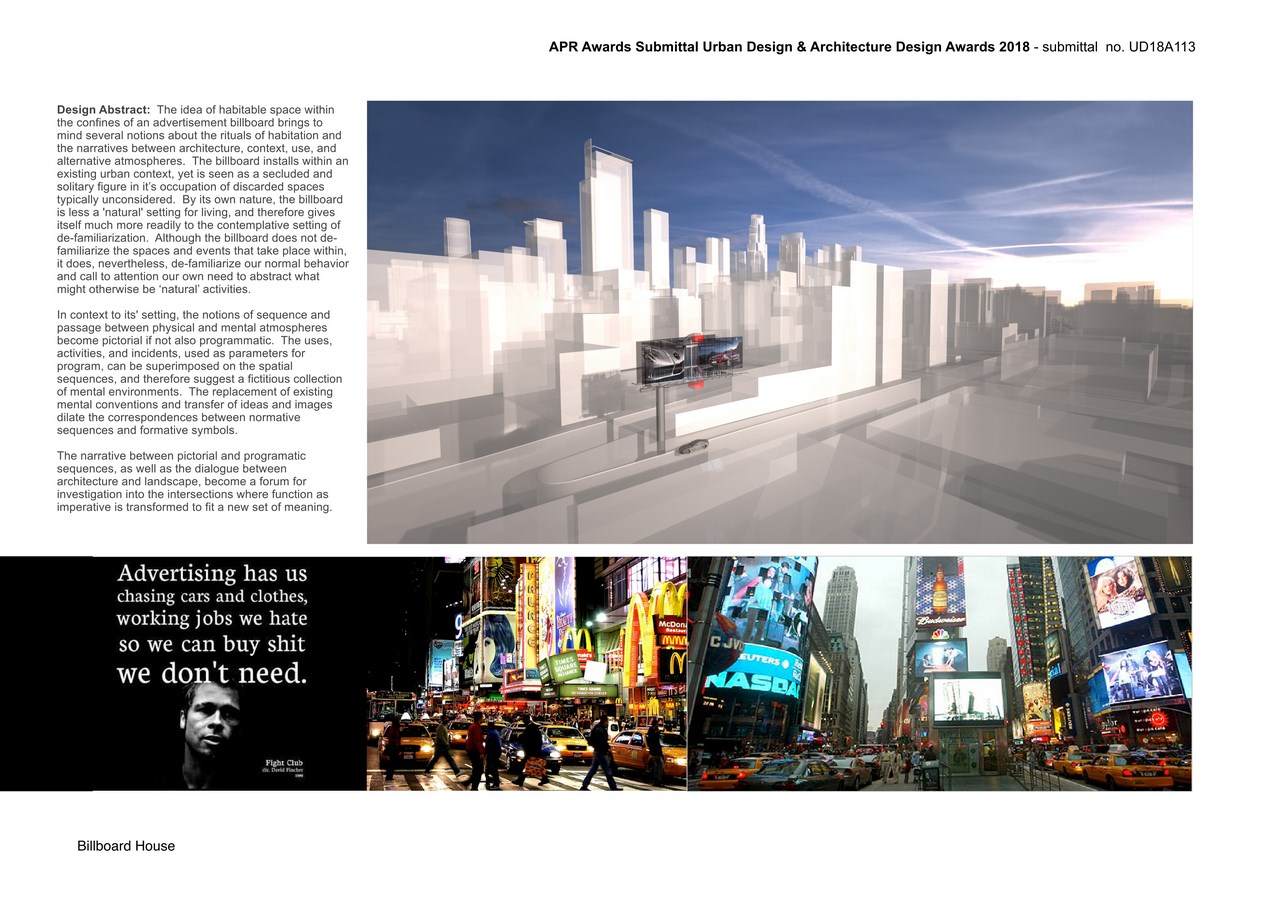
In context to its’ setting, the notions of sequence and passage between physical and mental atmospheres become pictorial if not also programmatic. The uses, activities, and incidents, used as parameters for program, can be superimposed on the spatial sequences and therefore suggest a fictitious collection of mental environments. The replacement of existing mental conventions and transfer of ideas and images dilate the correspondences between normative sequences and formative symbols.
The narrative between pictorial and programatic sequences, as well as the dialogue between architecture and landscape become a forum for investigation into the intersections where function as imperative is transformed to fit a new set of meaning.
Sustainability Abstract: Architecture is, as it always has been, a reflection of the intents and values of the culture that creates it.
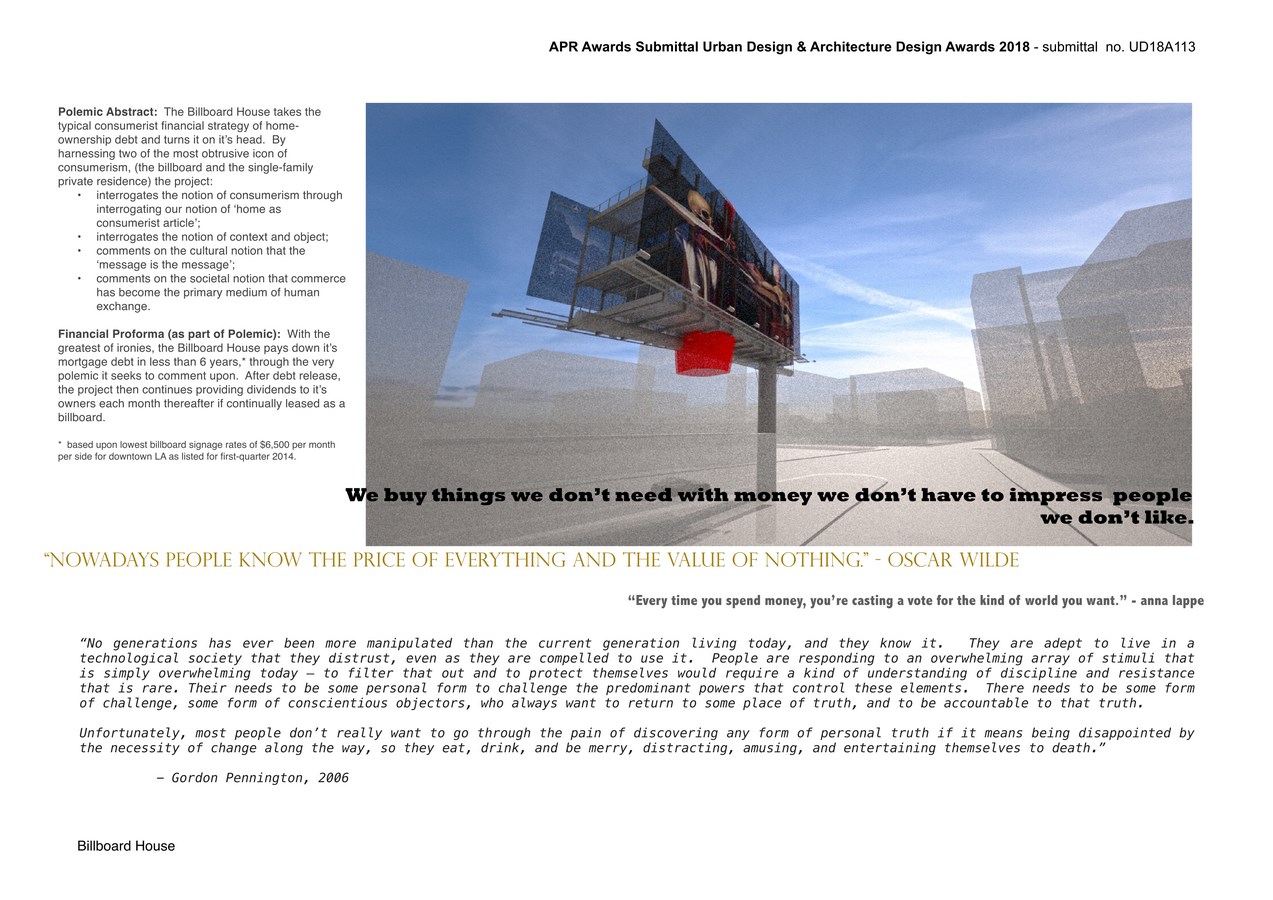
Perhaps the greatest act of ‘sustainability’ we can employ in architecture is a good, long, hard look at
ourselves in the mirror – asking ourselves to stop the internal dialogues just long enough to look around and realize that our built environment absolutely reflects our intents and values. Until we can do this with naked honesty, the Billboard acts as our own mirror, interrogating our intents and values with a certain precision at this critical point of cultural and ecological inflection.
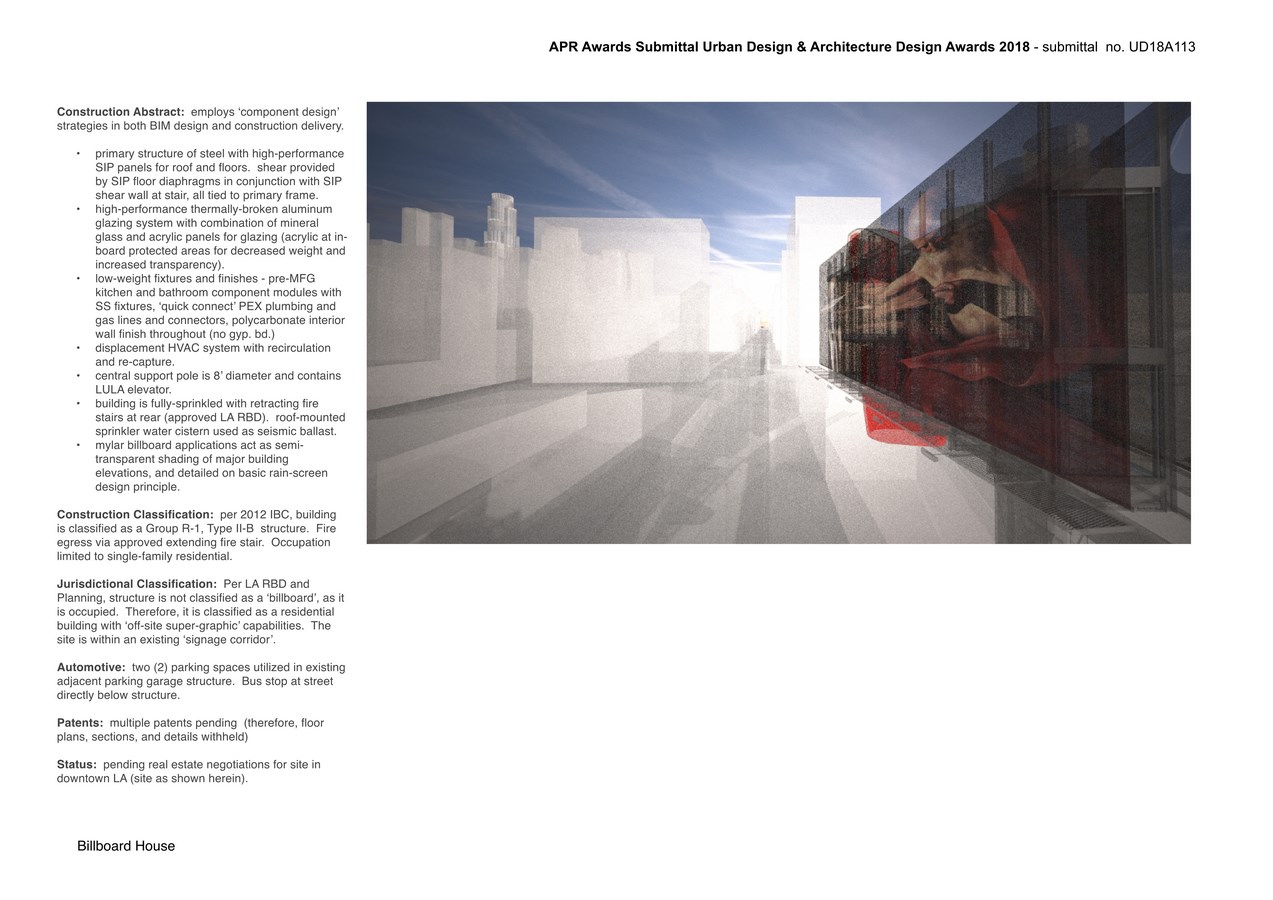
Program: 1,800 SF of living space within the confines of a typical “V” advertisement billboard, to include living and eating space, two bedrooms, living/dining/studio space, rooftop patio space, and outdoor living terraces and porches where possible.
Results: Employing aspects of ‘component design’ as borrowed from industrial design, the project is calculated to reduce waste (42% less), construction energy (18% less), and time (18% less) in it’s construction.
Employing ‘intelligent materials’, high-efficiency/low-consumption fixtures and appliances, and sustainable strategies (primarily through an unique shading mechanism, resulting in 96.4% self-shading of exposed elevations), the project consumes less energy (38% less than average 2,600 SF American residential home, 41% less than average 2,800 SF American residential home).
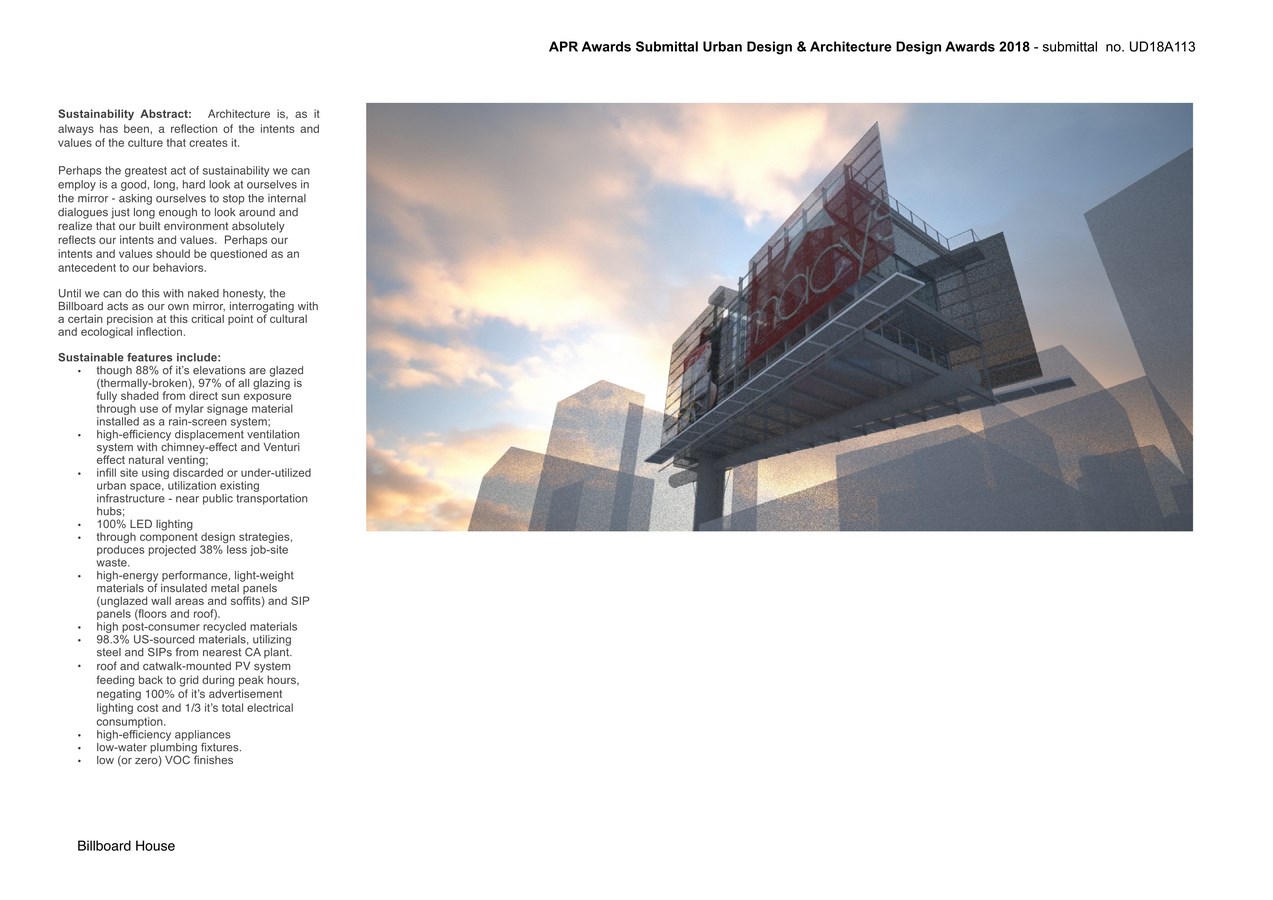
Employing a unique land-use strategy, the building consumes only 2% of the land required for a single-family residential lot. The project uniquely uses ‘left-over’, non-utilized, ‘found’ space within the existing urban fabric.
Thus, the project also utilizes existing infrastructure, parking structures, and urban amenities, while contributing more per square foot of taxable floor area to the local tax base (through it’s taxable ‘income’ from signage) than the average 2,800 SF American residential home.
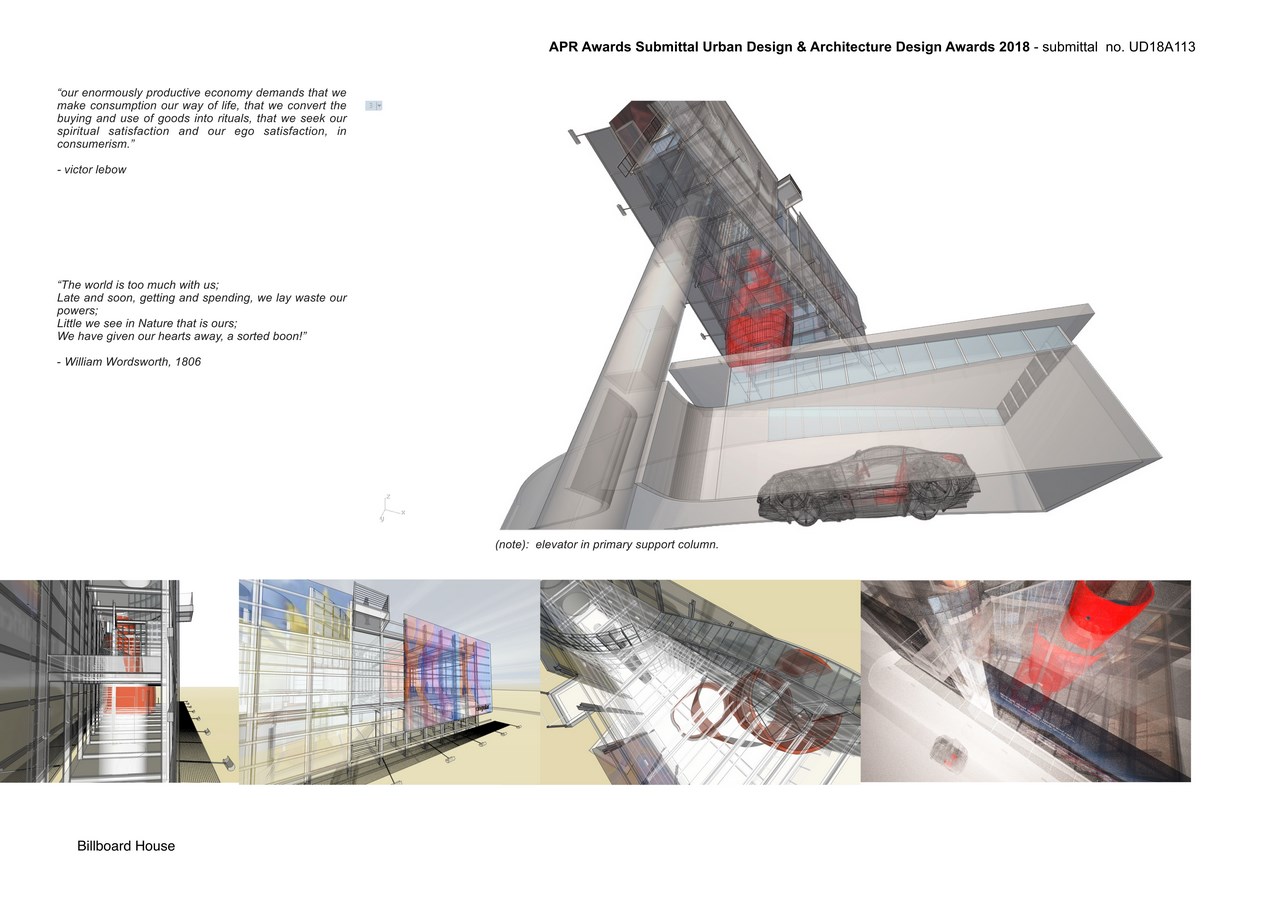
Ironically, this somewhat classified as ‘consumerism in reverse’, in it is able to enough generate income (from advertisements) to relieve it’s own debit in less than 6 years,
